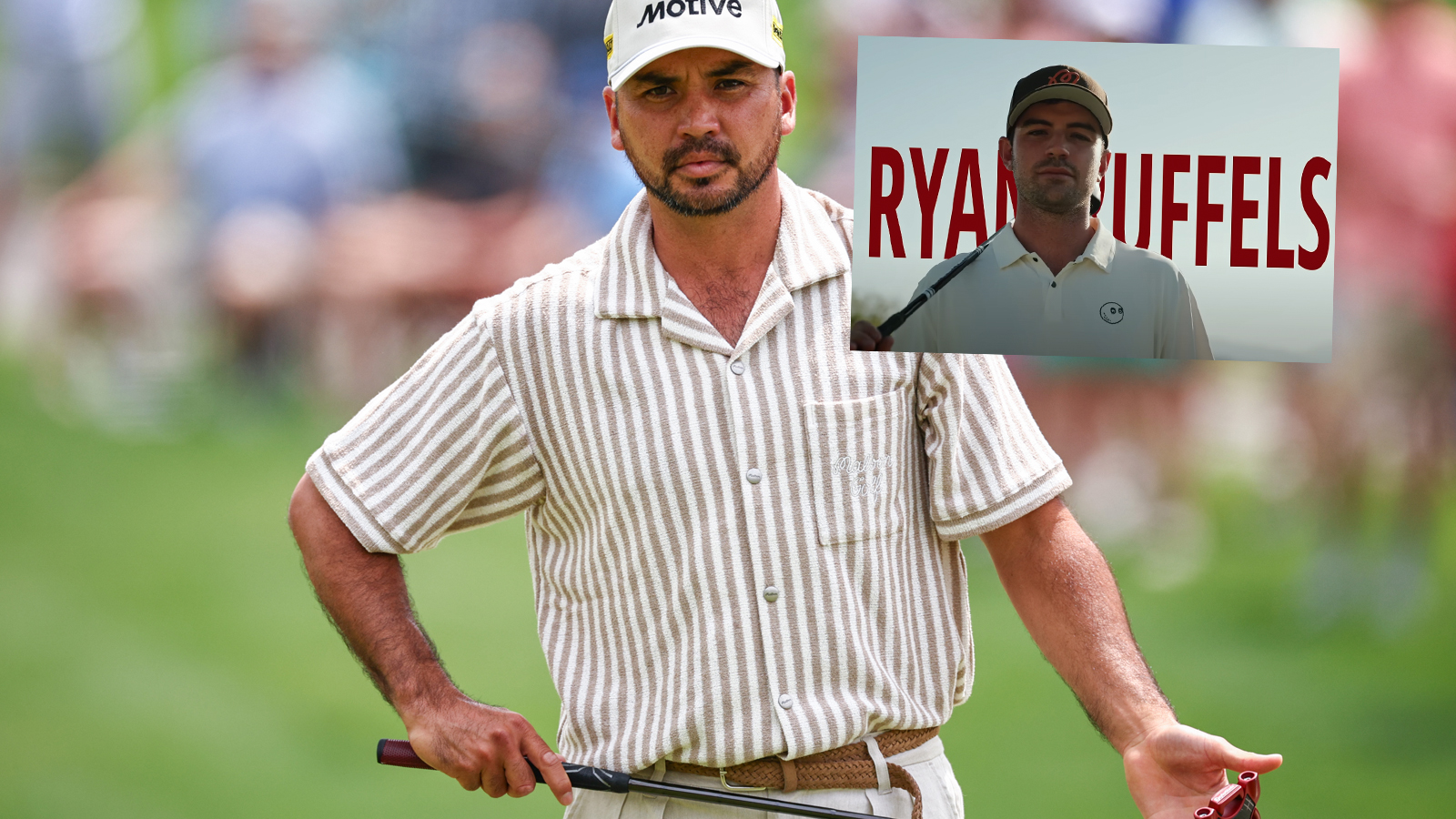Losing vs. Failing: Why every golfer needs to know the difference – Australian Golf Digest

- by Admin
- June 7, 2024

Shane Lowry’s tie for sixth in the PGA Championship would be the crowning achievement of most pro golf careers. He finished 14 under, came within inches of the first 61 in major championship history and earned $639,440 in prize money.
What was interesting was how Lowry chose to assess his week on social media.
“I tried… I failed… and I’ll try again,” he wrote.
Tour players post this sort of thing all the time in the aftermath of a big week—a succinct recap of how it went, a nod to what is still to come and a thank you to the fans for their support. But one word in Lowry’s post stood out: After beating 151 of the best players in the world at Valhalla, did Shane Lowry really fail?
The absence of a clear answer underscores one of the trickiest dynamics in golf, professionally and beyond. Next week’s U.S. Open will feature 156 players and only one winner. To apply only the narrowest definition of success is to ensure widespread disappointment. And that’s just the height of the sport. Survey a parking lot full of golfers after a typical net tournament, or even a friendly match, and satisfaction is often in short supply.
More Mental Game Golf Digest Logo How to be a less miserable golfer  Mental Game Confidence kills: What if everything you’ve been told to think is wrong?
Mental Game Confidence kills: What if everything you’ve been told to think is wrong?  Low Net What a bad break can reveal about a winning mindset
Low Net What a bad break can reveal about a winning mindset
All of this might lead to a familiar conclusion: Golf is hard, and misery is a given. If Shane Lowry can’t be happy after four rounds under par, there’s little hope for the rest of us. But that’s too simple. Because the real survival key to golf isn’t sidestepping failure. It’s learning to delineate between when you fail, and when you just lose.
This is the part of the story when friends and colleagues might start to roll their eyes. Seven years ago, I published a book called Win at Losing: How Our Biggest Setbacks Can Lead to Our Greatest Gains, that explores this very topic, and I’ve returned to it often since. The book examines notable setbacks across a broad spectrum of fields, golf included, and it also poses a central question about the difference between loss and failure. They are two words we tend to use interchangeably, but in doing so, we overlook an essential distinction.
“Losing is simply a fact. Failure is your interpretation of what happened,” Dr. Jim Loehr, a popular performance psychologist and author, clarified in the book. “Failure is almost always perceived as something you did wrong. It has a much more indicting component to it.”
Framing the two accordingly—a loss as a mere event in time, a failure as a commentary on performance—turns every golf round into a compelling case study, all of it dependent on context. By most objective measures—who he beat, the paycheck, how close he came to history—Lowry’s T-6 at the PGA was a tremendous week. But a closer look isn’t as rosy. Lowry began Sunday two shots off the lead and lost by seven. His final-round 70 was the second highest score among anyone in the top 10.
Every golfer assesses their performances on a different sliding scale. In Lowry’s case, with seven previous top-10s in majors, including a win in the 2019 Open Championship, he likely felt he failed to seize an opportunity (Lowry declined to respond to questions).
“Failing is when you give up. You quit, or you do something stupid that gives you no chance.”
Bryson DeChambeau
Predictably, Bryson DeChambeau was able to view his PGA Championship performance more favorably. He finished six strokes better than Lowry, and was on the driving range preparing for a playoff when Xander Schauffele made his clinching birdie putt on the 18th hole. By DeChambeau’s definition, the PGA was a mere loss.

Bryson DeChambeau acknowledges the crowd after holing a birdie putt at the 18th hole during the final round of the 2024 PGA Championship.
Icon Sportswire
“I gave it everything I had and made him earn it,” DeChambeau said. “There aren’t many shots I’d want to have back. I obviously wish I won. That stings. But I’m still proud of how I played.”
When would DeChambeau call a week a failure?
“Failing is when you give up,” he said. “You quit, or you do something stupid that gives you no chance.”
The losing-versus-failure distinction isn’t about checking a specific box, but identifying what a golfer needs. The temptation is to say top golfers are paid so well, their motivation is implicit. But the higher the stakes, the more baggage you carry. Without validation in the form of a win, players tend to look for positive reinforcement elsewhere.
“Self-preservation as a professional golfer can be the No. 1 thing,” said the journeyman pro Joel Dahmen. “I think you always try to take something positive from every single week, whether you stuck to your routine or you ate healthy that week, or you chipped well. If you take the view that it’s never good enough, you’re going to have very, very few days in your golfing life that you get satisfaction from.”
A year ago, veteran tour pro Billy Horschel’s game had reached such depths, he shot 84 at the Memorial and broke into tears in a press conference afterwards. A resurgent 2024 is apparent in a win at Puntacana and a top-10 in the PGA. But to Horschel it might have been just as apparent walking off the 18th green on Sunday at last month’s Charles Schwab Challenge. For an otherwise ordinary 24th-place finish, Horschel remarked to his caddie Micah Fugitt he was oddly pleased. “It felt like a top-10 because of certain things I did well,” he said.
“When you first come out on tour, you sort of miss what the goal is of anybody, which is to get better on a daily basis,” Horschel said. “Sometimes those improvements are leaps and bounds. And sometimes they are little improvements. Yes, we are a results-oriented business. But the results don’t always show how much you’re improving.”
Horschel chose to view the Charles Schwab Challenge as a mere loss. But if you’re keeping score, the failures require attention, too. Even if the game is too difficult to obsess over every miscue or setback, it’s also important not to gloss over opportunities to learn. There are occasions when we can attribute a bad shot to an outside force—a cart in your backswing, a pebble on your putting line. If you do it all the time, you’re either the unluckiest golfer on Earth, or you’re only telling yourself what you want to hear.
“If you bend the truth, you’re not learning from it,” Dr. Jim Loehr said. “We have a tendency to tell ourselves stories to get us through the night, but the important part is to start with the truth, as harsh as it is.”
‘If you take the view that it’s never good enough, you’re going to have very, very few days in your golfing life that you get satisfaction from.’
Tour veteran Joel Dahmen
What’s weird about golf is how often even the truth changes, or at least a version of it. Consider: Last week in the RBC Canadian Open, one over par missed the cut. At next week’s U.S. Open at Pinehurst No. 2, it could be good enough to win. The existence of a shifting criteria is embodied by that quintessential U.S. Open phrase, “good bogey.” Again, loss versus failure: We will see both at Pinehurst, but one reason golfers will be generally more accepting of bad results is because that’s what they expect going in.
“Think about this. If you stood on a balcony and leaned over from the first floor, you wouldn’t have any stress. If you leaned over the balcony on the 100th floor, you’d have a lot of stress. You haven’t lost your ability to lean over and stand,” said the sports psychologist Bhrett McCabe. “Too many people look at competition as a dichotomous outcome. Unfortunately, they don’t see the complexity of challenges thrown their way and how they need to respond.”
A loss recognizes we’ve chosen to play an impossible game. A failure forces us to consider the ways we could still improve. Striking the right balance between the two is what keeps golf from beating us down altogether.
This article was originally published on golfdigest.com
The Latest News
-
December 26, 2024Cricket: Australia’s Kostas gets better of India on debut
-
December 26, 2024Sam Konstas in epic response to MCG heroics amid wild Jasprit Bumrah detail
-
December 26, 2024Konstas, Kohli mid-pitch shoulder bump under microscope | cricket.com.au
-
December 26, 2024‘Clown behaviour’: Kohli blasted for ‘pathetic’ exchange
-
December 26, 2024Sports News Today Live Updates on December 26, 2024: India vs Australia BGT 2024-25: Sam Konstas shocks India with his remarkable debut | Watch





